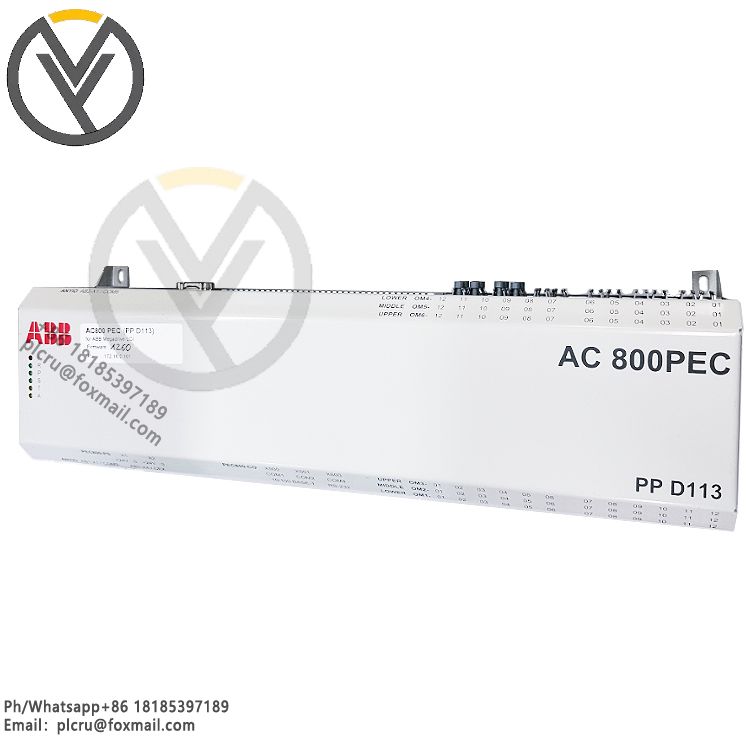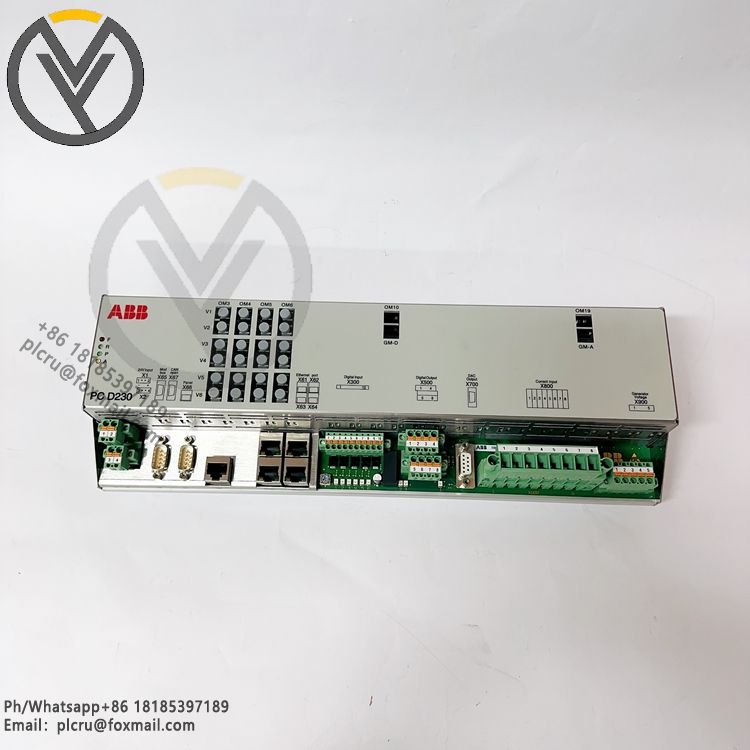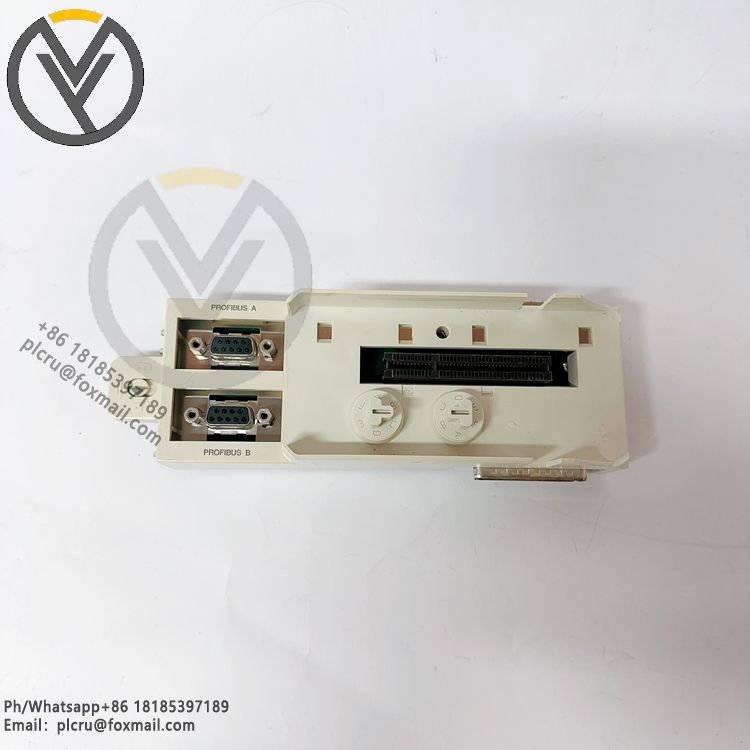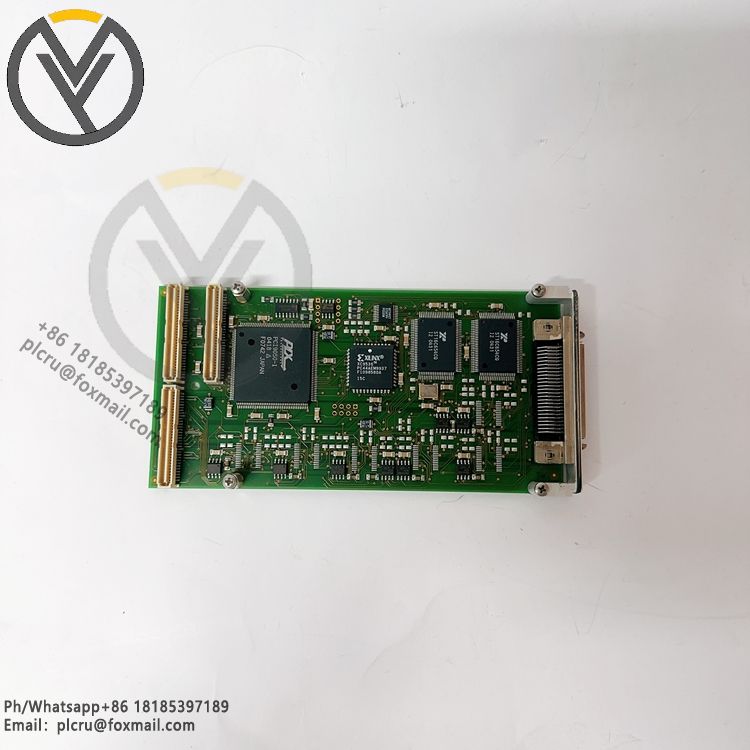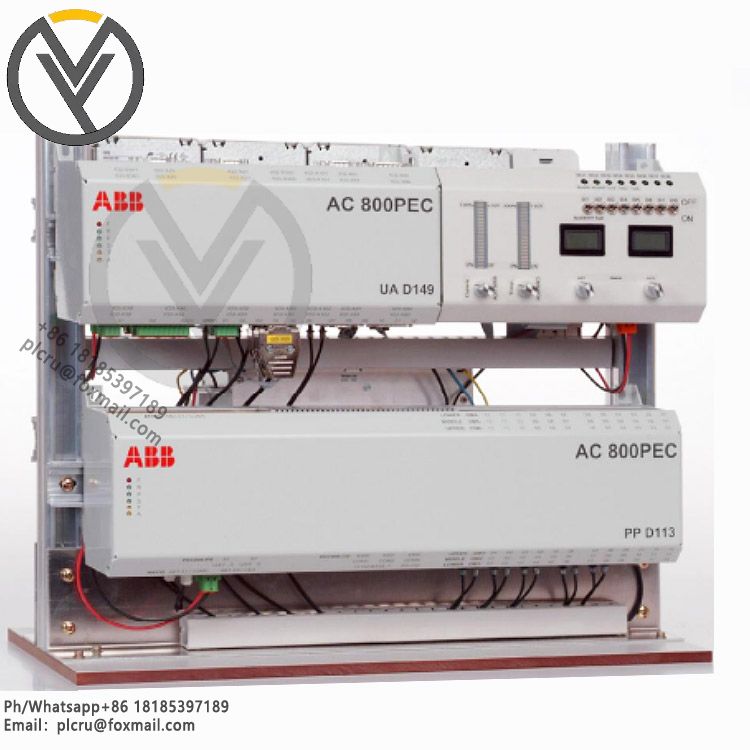
3BHB003041R0101 | ABB IOEC I/O Control Module
Delivery time 3 days
Product origin New/used
Email plcru@foxmail.com
Mobile/wechat /WhatsApp +86 18185397189
ABB's 3BHB003041R0101 IOEC I/O control module is a key component used in ind
ABB's 3BHB003041R0101 IOEC I/O control module is a key component used in industrial automation control systems, mainly responsible for the processing and control of input and output signals. Here is some information about it:
Functional features
Signal processing: It can collect and convert various types of input signals, including digital input signals (such as switch signals, level signals) and analog input signals (such as voltage and current signals), and convert them into digital signals that can be recognized by the control system. At the same time, it can also convert the digital signals sent by the control system into corresponding analog or digital output signals to control the operation of external devices.
Control function: It has certain logical control capabilities, can process and judge input signals according to preset rules and conditions, and output corresponding control signals. For example, it can realize the start and stop control of the motor, the opening control of the valve, the on and off control of the indicator light, etc.
Communication interface: It is usually equipped with a variety of communication interfaces, such as Ethernet interface, Profibus interface, etc., so as to communicate and exchange data with other devices (such as PLC, host computer, etc.) to realize system integration and remote monitoring.
Diagnosis and protection: It has fault diagnosis function, can monitor its own operating status and the status of connected equipment in real time, and once a fault is found, it can promptly notify the operator through indicator lights, alarm signals, etc. In addition, it may also have protection functions such as overcurrent, overvoltage, and short circuit to protect the module and external equipment from damage.
Technical parameters
Number of input and output points: The specific number of input and output points depends on the model and configuration of the module. There may be 8 points, 16 points, 32 points and other input and output channels of different specifications.
Input signal type: The supported input signal types include DC voltage signals (such as 0-24V), AC voltage signals (such as 0-110V, 0-220V), thermocouple signals, thermal resistance signals, etc.
Output signal type: The output signal types include DC voltage output (such as 0-24V), AC voltage output (such as 0-110V, 0-220V), relay output, etc., and the appropriate output method can be selected according to different load types.
Accuracy: The accuracy of analog input and output is usually around 0.1% - 0.5% FS (full scale), and the response time of digital input and output is generally in milliseconds.
Working voltage: Generally DC 24V, but some models also support other voltage levels, such as DC 12V or AC 220V.
Application scenarios
Industrial automation production line: used to control various equipment on the production line, such as conveyor belts, robots, packaging machines, etc., to achieve automation and intelligence of the production process.
Power system: In power systems such as substations and power plants, it is used to monitor and control the operating status of power equipment, such as switch opening and closing control, voltage and current monitoring, etc.
Process control system: In process industries such as chemical, petroleum, and metallurgy, the temperature, pressure, flow and other parameters of equipment such as reactors, distillation towers, and heating furnaces are controlled and adjusted.
Building automation system: used in intelligent buildings to monitor and manage air conditioning systems, lighting systems, elevator systems, etc., and improve the energy efficiency and comfort of buildings.
Installation and Maintenance
Installation method: It is usually installed with a standard 35mm DIN rail, which is convenient and fast, and easy to layout and fix in the control cabinet. It may also support panel installation or other special installation methods to meet different application requirements.
Wiring requirements: When wiring, it is necessary to follow the module's instructions to make correct wiring, ensure that the input and output signal lines, power lines, communication lines, etc. are firmly connected to avoid looseness or poor contact. At the same time, pay attention to the polarity and shielding requirements of the wiring to reduce electromagnetic interference.
Maintenance points: Regularly check the operating status of the module, including checking whether the indicator light is normal, checking whether the communication is stable, and measuring whether the input and output signals are accurate. Clean the dust and debris on the surface of the module to ensure good heat dissipation. If a module fault is found, it should be promptly checked and repaired according to the fault prompt information, and the faulty module should be replaced if necessary to ensure the normal operation of the system.

